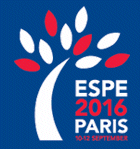
55th Annual ESPE
Paris,
France
10 Sep 2016 - 12 Sep 2016
Paris, France: 10-12 September 2016 Further information
Symposia
Genetics and epigenetics of thyroid dysgenesis
hrp0086s2.1 | Genetics and epigenetics of thyroid dysgenesis | ESPE2016
Determination of Autosomal Monoallelic Expression in Thyroid Tissue Assessed by Whole-Exome and Bulk RNA Sequencing: A Role in Thyroid Dysgenesis, Autoimmunity and Cancer
Background and hypotheses: Congenital hypothyroidism due to thyroid dysgenesis (CHTD) is a disorder with a prevalence of one in 4,000 live births, the cause of which remains unknown. The most common diagnostic category is thyroid ectopy, which occurs in up to 80% of CHTD cases. CHTD is predominantly not inherited and has a high discordance rate (>92%) between monozygotic (MZ) twins. The sporadic nature of CHTD might be explained by somatic events such as autosomal monoalle...
hrp0086s2.2 | Genetics and epigenetics of thyroid dysgenesis | ESPE2016
Genetics of Thyroid Dysgenesis and Associated Malformations
Thyroid dysgenesis (TD) is the most common cause of congenital hypothyroidism in iodine sufficient regions. TD includes a broad spectrum of developmental anomalies varying from absence of thyroid (athyreosis) to an abnormally located thyroid (ectopy), small (hypoplasia) or asymmetric thyroid. Thyroid dysgenesis is usually sporadic, but up to 2% of cases is familial. Genetics of TD is complex and advances in developmental biology over the past two decades revealed monogenetic f...
hrp0086s2.3 | Genetics and epigenetics of thyroid dysgenesis | ESPE2016
New Insights in Thyroid Development
The mammalian thyroid gland stands out in comparison to other organs as it develops from no less than three independent anlagen that originate in anterior endoderm. The median or central anlage present in the pharyngeal floor gives rise to the thyroid bud or diverticulum that provides progenitors to the thyroxin-producing follicular cells. Bilaterally, the ultimobranchial bodies bud off from the inferior-most pharyngeal pouch. Until recently those structures were considered me...



